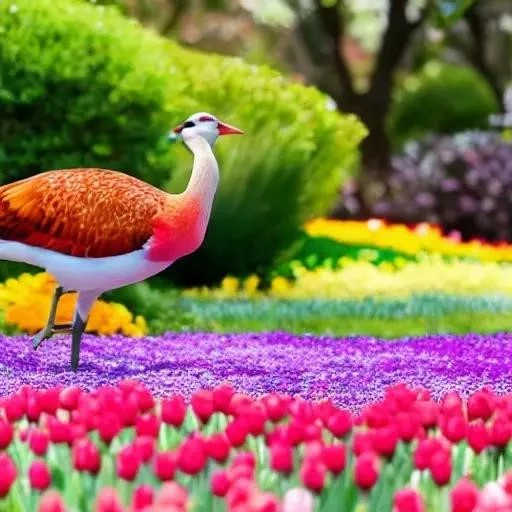
Imagine gazing out your kitchen window, expecting the usual robin or squirrel, only to be met by the majestic, iridescent plumage of a wild turkey, confidently strutting through your meticulously cultivated flower garden. This isn’t a scene from a nature documentary; it’s an increasingly common reality for homeowners across North America, a surprising testament to nature’s enduring presence even in our most manicured spaces. This unexpected visitor, a creature once on the brink of disappearance, now boldly navigating suburban landscapes, is more than just a passing curiosity; it’s a profound symbol of a burgeoning ecological shift.
This captivating encounter, a wild creature comfortably navigating human-designed landscapes, serves as a poignant emblem of a much broader ecological narrative unfolding around us. As urban sprawl continues its relentless march, wildlife, from deer to coyotes and, indeed, the once-elusive wild turkey, are demonstrating an astonishing capacity to adapt, integrating themselves seamlessly into our suburban tapestry. Their presence challenges our long-held notions of where ‘wild’ begins and ‘civilized’ ends, forcing us to reconsider our role within these shared ecosystems and prompting a vital dialogue about coexistence.
| Attribute | Description | Source/Reference |
|---|---|---|
| Scientific Name | Meleagris gallopavo | All About Birds (Cornell Lab) |
| Native Range | North America (Canada, USA, Mexico) | National Wild Turkey Federation |
| Habitat | Forests, woodlands, open fields; increasingly adapting to suburban environments with green spaces. | National Wild Turkey Federation |
| Diet | Omnivorous: Acorns, seeds, berries, insects, small invertebrates. | All About Birds (Cornell Lab) |
| Conservation Status | Least Concern (following remarkable recovery efforts throughout the 20th century). | IUCN Red List |
| Social Structure | Typically found in flocks; hens often with their poults (young turkeys), or all-male bachelor groups. | All About Birds (Cornell Lab) |
| Suburban Adaptations | Utilizing backyard resources like bird feeders, foraging in gardens, and seeking shelter in parks and wooded residential areas. | National Wild Turkey Federation |
The resurgence of the wild turkey, once perilously scarce due to overhunting and habitat destruction, stands as a monumental conservation success story. Through painstaking reintroduction programs and habitat restoration initiatives beginning in the mid-20th century, these magnificent birds have not only recovered but are now flourishing, even in unexpected locales. Dr. Evelyn Thorne, a leading urban ecologist at the University of Environmental Studies, observes, “The wild turkey’s return to our backyards isn’t merely about one species; it’s a powerful indicator of ecosystem health and resilience. It signals that our efforts to preserve natural spaces, however small, are incredibly effective.” This optimism is truly infectious, painting a picture of a future where nature isn’t just surviving, but actively thriving alongside us.
This phenomenon offers a unique lens through which to examine our relationship with the natural world. By integrating insights from AI-driven urban planning models and community-led conservation efforts, we are beginning to design landscapes that intentionally accommodate wildlife. Consider the increasingly popular trend of “rewilding” suburban yards, replacing sterile lawns with native plants that provide food and shelter for local fauna. Such initiatives, championed by organizations like the National Wildlife Federation, transform individual properties into vital stepping stones, creating interconnected green corridors that benefit everything from pollinators to larger mammals, including our feathered garden guests.
Moreover, the presence of these wild residents offers invaluable educational opportunities; For children, observing a flock of turkeys foraging through fallen leaves or a lone male displaying his impressive fan of tail feathers can spark an enduring wonder and respect for nature. This firsthand exposure fosters a generation more attuned to ecological stewardship, understanding that every action, from choosing native plants to reducing pesticide use, has ripple effects across the local ecosystem. As humanity grapples with the grand challenges of climate change and biodiversity loss, these intimate encounters with nature’s persistence offer a profound reminder of what is possible when we consciously choose coexistence.
Looking ahead, the sight of a wild turkey in a flower garden might become less a novelty and more a celebrated symbol of a future built on mutual respect and shared prosperity between humans and the natural world. This forward-looking vision encompasses innovative urban design, where green infrastructure isn’t an afterthought but a foundational element, creating vibrant, biodiverse communities. Embracing this perspective, we are not just observing nature’s comeback; we are actively participating in its design, shaping a world where the unexpected beauty of the wild is woven into the very fabric of our daily lives, enriching us all immeasurably. The backyard turkey, therefore, is not just a bird; it’s a feathered ambassador of hope, guiding us toward a more harmonious, wilder tomorrow.
